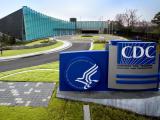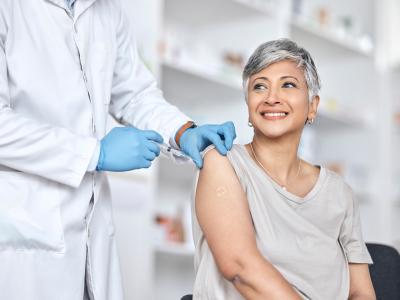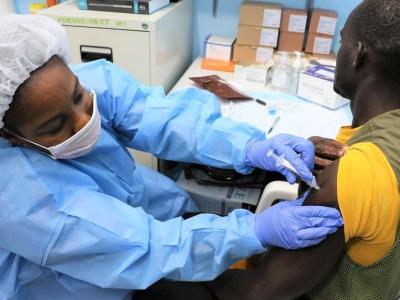Mar 20, 2008 (CIDRAP News) – A progress report released today says the US government has stockpiled enough prepandemic H5N1 influenza vaccine for 13 million people, more than double the number listed in the previous report, issued last July.
The report on pandemic preparations by the Department of Health and Human Services (HHS) also says the government plans to release a new version of its pandemic vaccine allocation plan in coming months, after considering comments at a series of recent meetings and forums.
The 16-page report from HHS Secretary Mike Leavitt lists a wide range of HHS pandemic preparations. It emphasizes the agency's efforts to collaborate with other stakeholders in tackling problems like vaccine allocation and who should bear the burden of stockpiling supplies such as face masks, respirators, and antiviral drugs. The report is the fifth in a series that began in March 2006.
Concerning the H5N1 vaccine, the report says, "By the end of 2007, HHS had purchased and stockpiled 13 million courses of pre-pandemic vaccine." The previous report, issued in mid-July, said the agency had acquired 12 million doses of the vaccine, enough for 6 million people.
The vaccine, based on a clade 1 virus isolated from a Vietnamese patient in 2004, was approved by the Food and Drug Administration in April 2007. Although no one knows how well it would work against an emerging pandemic strain of H5N1, HHS officials hope it would provide some protection to those most at risk for exposure in the early months of a pandemic.
The report also says that HHS has acquired enough antiviral drugs to treat 40 million people, or about 80% of the agency's goal of 50 million. Officials want the states to buy enough additional doses with the help of a 25% federal subsidy to treat another 31 million people. The report does not specify how many courses the states have bought but says that many have purchased "the full subsidized amount or more."
The Centers for Disease Control and Prevention (CDC) recently told CIDRAP News that the federal antiviral stockpile has reached 39.8 million treatment courses of oseltamivir (Tamiflu) and 9.9 million courses of zanamivir (Relenza). Both drugs are neuraminidase inhibitors; oseltamivir is the recommended first-line treatment for H5N1 infection.
The progress report say HHS has reached out to state and local governments, medical professionals, religious leaders and ethicists, business, organized labor, and individuals for help in pandemic planning. Recent efforts included two public meetings in November and a Web dialogue last December that drew more than 400 people from 37 states into a discussion of the proposed vaccine allocation plan.
During a recent pandemic simulation exercise, CDC officials said it would take at least 4 or 5 months to start producing a vaccine well-matched to an emerging pandemic virus. Last October HHS released a draft vaccine allocation plan that assigned priority to deployed military and other critical national security personnel, emergency medical services and public safety workers, key government officials, medical providers and public health workers, pregnant women, infants, and toddlers.
In the recent meetings and forums, the progress report says, "experts and the public identified the most important vaccination goals as protecting those who will be the first to respond to the pandemic and care for the sick, those who keep vital community services working, those who have increased exposure due to their jobs, and pregnant women and children."
Some senior citizens involved in the discussions said they would willingly give up their vaccine doses in favor of their grandchildren, despite the likelihood that their own mortality risk would be high, the HHS report says.
"Based on these dialogues and the thoughtful input of so many segments of society, a working group of government officials is in the process of refining the allocation plan with the goal to release the plan in the coming months," it states.
Other recent collaboration efforts, the report says, included nearly 20 meetings around the country last fall to consider "the shared responsibility concept of stockpiling medical countermeasures (vaccines, antivirals, rapid diagnostic tests, and masks/respirators), as well as private-sector stockpiling of antivirals." HHS plans to draft a guidance document on those topics, but the report lists no timeline.
In other areas, the report says HHS:
- Has awarded 27 contracts worth $3.5 billion since 2005 to develop plans and begin projects in its medical countermeasures program
- Has invested more than $130 million in research on vaccine adjuvants (substances that boost the immune response to a vaccine)
- Plans to study the knowledge, attitudes, beliefs, and communication message needs of vulnerable groups such as the homeless and non-English-speakers, with the aim of developing messages about community mitigation measures for combating a pandemic.
See also:
HHS report "Pandemic Update V"
http://www.flu.gov/professional/panflureport5.html
Mar 14 CIDRAP News story "HHS issues pandemic planning guide for states"
Oct 24, 2007, CIDRAP News story " Pandemic vaccine proposal favors health workers, children"
Jul 19, 2007, CIDRAP News story "HHS updates pandemic stockpile totals and planning efforts"


















